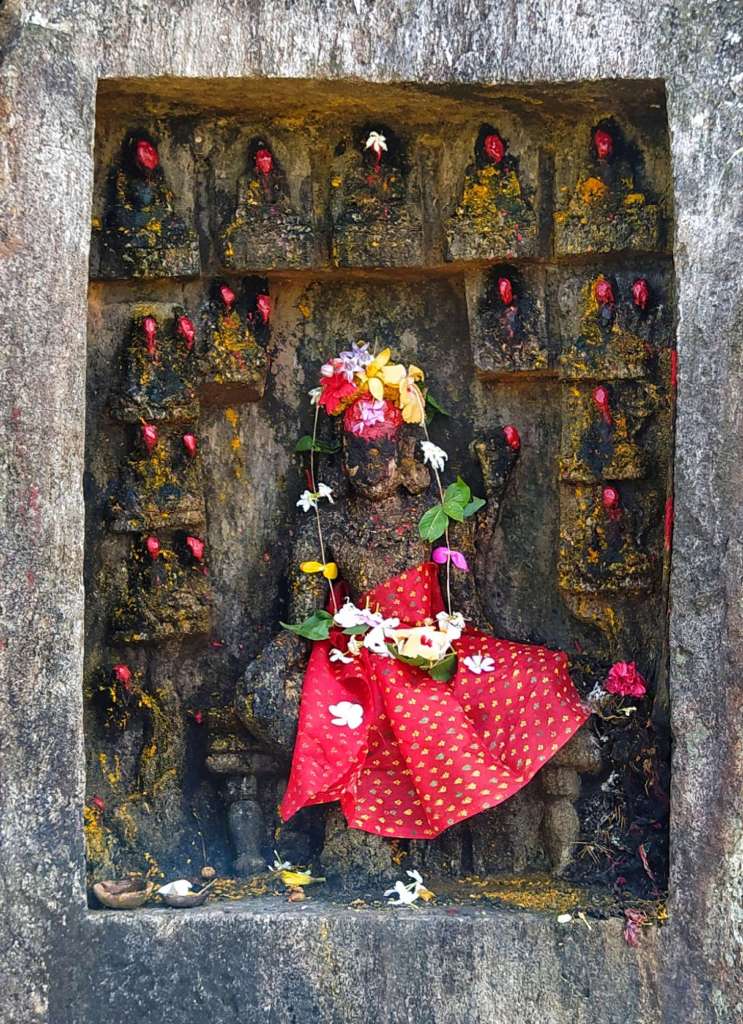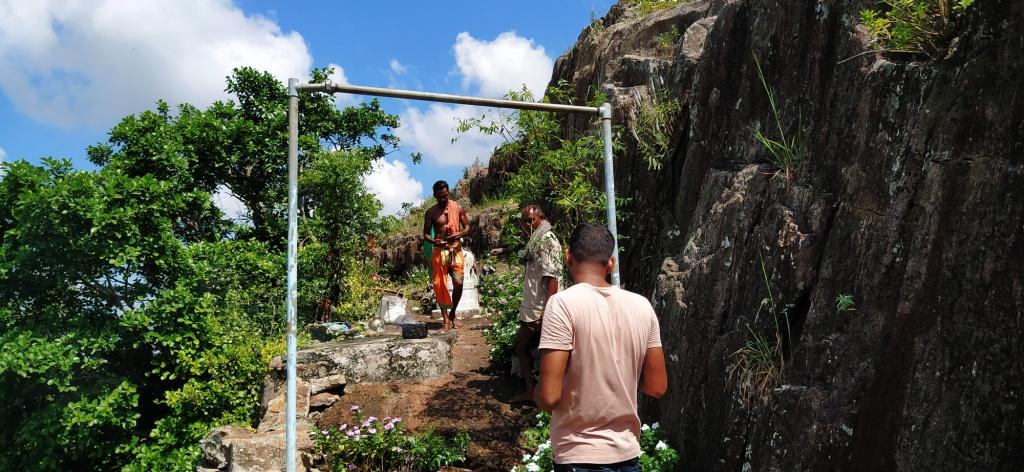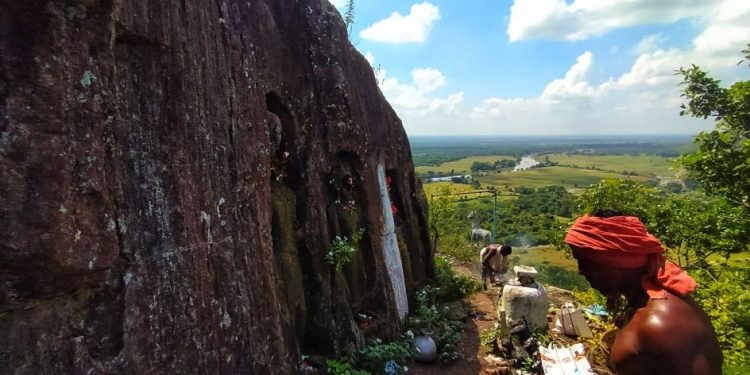Located on the peak of Udayagiri hill in Assia hill range, ‘Solapua Maa’ has never been shown any interest neither by the ASI nor by the state Archeology department
If we look carefully at the images and sculptures, we can recognise that actually these deities belong to the Buddhist culture. Here, we can find the rock-cut sculpture panel carved with the images of Manjusri, Bodhisattvas, Avalokatesvara, four-armed Tara…..
- Akrura Jena| heritage researcher
JAJPUR: Even the slightest mention of Buddhism in Odisha cannot go without alluding at the Diamond Buddhist Triangle.
The triangle is the largest concentration of Buddhist remains and the three sites consist of three points or vertices namely—Ratnagiri, Udayagiri and Lalitgiri. These sites consist of a series of monasteries, temples, shrines, stupas, and beautiful sculptures of Buddhist images.
Their rural setting, among fertile hills and paddy fields, is both picturesque and peaceful. The surrounding area or vicinity of Diamond Buddhist Triangle includes Kolangiri, Kaema, Jagaddala (vihara), Bajragiri and Sahaspur. Interestingly, they were never considered as Buddhist sites while actually they are.
Like these, there is a site named ‘Sola pua Maa’ which is located on the peak of Udayagiri hill in Assia hill range.

Both the ASI and state Archeology department have never showed any interest on this site for its development. The site is now accessed by local people and tourists.
According to Srinibash Samal, a heritage enthusiast, it is a living shrine and worshipped as ‘Solapua Ma Thakurani’ by local Hindus. “However, due to its narrow path with stairs and peak at an elevation, very few tourists have reached here physically while many admire it from down below.”
Local resident and heritage researcher Akrura Jena, who is a regular to the spot, said, “If we look carefully at the images and sculptures, we can recognise that actually these deities belong to the Buddhist culture. Here, we can find the rock cut sculpture panel carved with the images of Manjusri, Bodhisattvas, Avalokatesvara, four-armed Tara and a rock cut stupa containing inscriptions of few lines and two caves facing towards south direction.
“Here, the structural system is rock-cut panelled, the building technique is themed on hewn natural rocks and construction material is Khandolite stone.”
If one compares this site with Langudi hill, then s/he can clearly find that there are many similarities between these two sites like images on rock-cut sculptures. There are no specific images excluding a stupa, and all are in a panel like that temple wall painting and votive stupas. Here, the main deity is ‘Tara’.

According to GC Chauley’s 2004-release book ‘Monumental Heritage of Orissa’— on the basis of iconographical features, the rock-cut panel can be dated to the 10th –11th AD by Somavanshi. But according to the traditional accounts, they were Shaivites, as evident from their inscriptions.
The Pāshupata and the Mattamayura schools of Shaivism appear to have been popular during the time. And multiple temples including the Lingaraj temple, Mukteswar temple, Rajarani temple and Brahmeswar temple among several others which are strictly dedicated to Shiva were build during their tenure. And now the question is why they should build Buddhist monuments? It is inferred that this site is not built by Somavanshis and it can be said that it is done far before from their era. It might be in the age of Kharavel.
A local priest, who is not a Brahmin but a Savara, said, “It is a 600-year-old place and constructed by Marathas. Though it is a popular religious and historical place, in every Sankranti and in every Purnima they offer a ‘Homa’ near the deities. But during Raja festival, this place is crowded with more than thousands of devotees and visitors. We can say it is the prominent festival of this place.”
CHAITALI SHOME, OP






































